#TarsemSingh
Explore tagged Tumblr posts
Text

0 notes
Text
Losing my Religion

The video for losing my religion was nominated for 9 MTV awards in 1991 and won six including video of the year. At the same time the video was banned on the national broadcaster in Ireland.
The video was directed by Tarsem Singh, and gathers a number of influences together to create a video in the style of a certain type of Indian filmmaking. It is modelled on a short story by Gabriel Garcia Marquez, “A very old Man with enormous wings”. The opening sequence (25 Seconds before the song begins) is a recreation of a scene from “The Sacrifice” by Andrei Tarkovsky.( https://www.youtube.com/watch?v=ODJb2-PLu7Y The Sacrifice Tarkosky trailer). Inspiration is also taken from Caravaggio, and religious imagery from Saint Sebastian, the In redulity of Thomas and Hindu deities.
Michael Stipe the lead singer and writer of the lyrics says that losing my religion is a Southern term for losing your composure. The song is about someone pining for someone else. It according to Stipe is a classic pop obsession song, Like the Police Every breath you take.
#losingmyreligion #animation #Tarkovsky #TarsemSingh #MTVvideooftheyear
3 notes
·
View notes
Photo
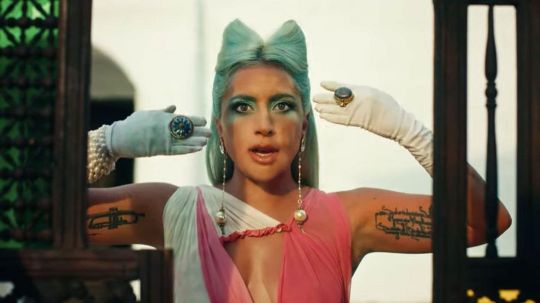
Best Music Video of 2020:
💊911💊 by Lady Gaga
One of Gaga’s best music videos in years mimics elements of her career, colorful unorthodox looks married with the unexpected. The unique aesthetic can be contributed to director Tarsem Singh’s inspiration of Sergei Parajanov’s ‘The Color of Pomegranates’ which he uses to symbolically represent the self inflicting lyrics of the pulsing track. The surrealism leads to an electrifying pound to the chest where Gaga’s newly displayed acting chops are front & center. When compared to Lady Gaga’s other sci-fi inspired, more mainstreamed #Chromatica music videos, 911 sticks out in the best way possible.
https://www.instagram.com/p/CKLDN-lBpkv/?igshid=ul105t7d3k1u
1 note
·
View note
Photo

After a series of low-budget horror, I decided to up my game last night with a rewatch of THE CELL. Light on plot—your basic serial killer concept with a small science fiction twist—and not particularly strong acting—early roles for @jlo and Vince Vaughan—combined with an almost overwhelming visual tableau make this an interesting film for me. Lopez feels tentative, which works for her character, but she’s gotten much stronger as an actor. She is—as always—achingly beautiful which suits the over-the-top costuming in this film (from Oscar winner Eiko Ishioka) that’s somewhere between haute couture and camp. D’Onofrio (making his second appearance in my Shocktober films) is great as the killer. He is such a chameleon in his roles, transforming his body and acting style to suit the character. I also love director Tarsem Singh’s visual aesthetic, which is what makes this film work for me. Alluding to everything from @damienhirst to H. R. Giger to Odd Nerdrum, THE CELL ticks so many boxes on my interest it’s ridiculous. I haven’t even mentioned the nods to David Lynch with the body wrapped in plastic a la TWIN PEAKS or watching from within a closet like in BLUE VELVET. If you liked this film, you have to watch THE FALL from this same director. #librarydvd #31scarymovies #jenniferlopez #vincevaughn #vincentdonofrio #tarsemsingh (at Waukesha, Wisconsin) https://www.instagram.com/p/CGSTfJUg_Ac/?igshid=1gv912cq0az26
1 note
·
View note
Photo
Beautiful collection.


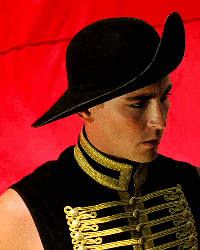



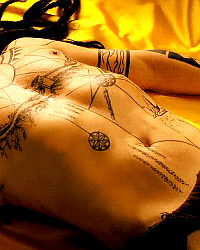

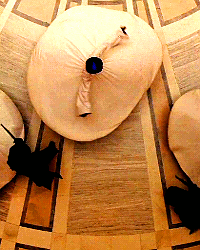
It was the natural order of things… all things must die.
2K notes
·
View notes
Photo

#TheFall is one of my favorite movies of all time so I have high hopes for this earlier #TarsemSingh project. . #NowShowing #TheCell https://www.instagram.com/p/CcM3b5lu_1G/?igshid=NGJjMDIxMWI=
0 notes
Text
One of the best critique in defense of The Fall 2006--one of my favorite movies! My go-to movie when I want to feel something other than the coldness of my heart.
Answering the Critics of Tarsem Singh’s The Fall
(Previously appeared on my old tumblr. Reposting revised version by request:) A couple of years ago, I fell head-over-heels in love. With a movie. Specifically visionary director Tarsem Singh’s 2006 labor of love, The Fall. The first time I watched it, I was swept away by the visuals but confused by the story itself. Was it good? I wasn’t sure. But I couldn’t stop thinking about it, so I sat down to watch it again and this time, I realized that it was a film told in the language of symbols. Once my brain unlocked that, the film absolutely blew me away. It rocketed to the top of my favorites list, which is saying something considering my top ten hasn’t changed in about twenty years and most of the films on it are more than sixty years old. I hadn’t been so transported by a modern film in years.

Not only that, but it has changed the way I view my role as a writer and storyteller, a quantum shift. (I’ll write more about that in another post later.) Needing to connect with the opinions of others, I searched out reviews on-line and was staggered by how poorly this film had been received by mainstream industry critics. At the time, it had only a 59% aggregate rating on Rotten Tomatoes (the rating has since climbed to 61% but only because some negative reviews have been deleted,) ranking it significantly below such cinematic treasures as Talladega Nights and Jackass: Number Two.
So I began to carefully read the negative industry reviews in an effort to understand what it was that the people paid to professionally understand film did not, in fact, understand about this particular film. And what I discovered was this: they are Philistines. Yeah, I’m sorry, but they are. There’s something very wrong when people who make a living watching movies almost willfully misunderstand a film that is all about understanding, provided you have a basic grasp of the universal language of symbolism and metaphor and creative narrative structure. And you would think a film critic would have something of a nodding acquaintance with those things.
What follows is my defense of the film against the most often-cited issues raised in those reviews. If you haven’t seen the film, this won’t make much sense. If you have and didn’t like it, maybe it will inspire you to try again. In any case, spoilers abound.
What you have to understand about this film first and foremost is that it is a testament to the power of storytelling. You can’t go in expecting realism–even the sort of realism that often grounds fairy tales and fantasies. You know why? Because stories aren’t really real. They’re how we help ourselves understand reality by turning it on its head in a space removed from ourselves where we can safely examine it.
So we know this is a story about stories. We also know that stories function through the language of symbolism and metaphor. This is how storytellers connect their own thoughts and feelings to those of their audience through shared experiences. I can tell you that a man is like an oak tree and you will understand that I don’t literally mean this man is an oak tree. But because, like me, you have also seen an oak tree, you will instantly have a feeling about this man that I want you to have. That is the language of story.
The best stories add to this a language of their own and require the audience to learn that language in order to participate in the story. This film is such a story and one of the criticisms stems from those who were either deaf to that language, weren’t aware that they were expected to pay attention to it, or were too impatient to do so. These are the critics who found the film to be “empty eye candy” when, in fact, it speaks a rich, symbolic language.
It’s not a difficult or obscure language and the storyteller (director Tarsem Singh) helps you to understand, if you are willing to participate. And because there is a theme here of shared storytelling, it is right that you should. The storyteller even tells you so with the defining lines of this film: “It’s my story,” the hero says. And the heroine counters “Mine, too.” It is a compliment he is paying you as well as a hearkening back to the very roots of story: the audience is part of the story.
In film, the storyteller makes use of images, visuals that help him connect the intent of his story with his audience. But that still requires willing participation. It still requires that you understand the language not just of words but of the things that he will show you.
So the director uses the camera in many different ways to direct you to see what he wants you to see and feel what he wants you to feel. In this film, our director/storyteller uses his camera as an open door into his vision. But he does not abandon you in this world of his. He stays with you, telling you what to notice. He even tells you he understands that you will not get all of it by making his heroine someone who barely understands the language around her. Like her, you will learn. But you have to listen to him and you have to remember.
Perhaps most importantly, you have to step away from the conventions of more realistic films and back into that language of story. Because in the real world and films that try so hard to ape it, randomness occurs regularly. But in symbolic story, nothing is random. Everything is important. And so it is, here.
Because we are in the hands of a virtuoso visualist, the wealth of symbolism contained in this film can be overwhelmed by the sheer beauty of the images. That is a valid criticism but it’s what we call a high-class problem with a simple solution: watch it again.
At heart, this is a love story, but it is also a passionate love letter to storytelling. We are told this right up front, when our heroine Alexandria writes a love note. But love does not always lead us where we intend and like a butterfly, her note flutters through an open window and into unexpected hands.

Alexandria’s love note will appear again throughout the film, a reminder of its strength and power. And we will see her take up her crayons again later, as she literally tries to draw the hero out of his unhappiness. There is power in her creative expressions as there is power in story.
But back to those opening scenes. Everything is important and a potential symbol, and that includes Alexandria’s seemingly uninteresting costume. Notice that she wears a gray sweater and because her left arm is in a cast, one arm of her sweater hangs down. What does that remind you of? Maybe nothing just yet but keep paying attention.

When she meets Roy, the accidental recipient of her love note, she shows him her box of treasures and the first thing he draws out of the box is a small elephant. While elephants are universal symbols of good luck (you knew this, I hope), they are particularly so in India, where they are identified with water, of the greatest importance in a hot, dry climate. Water is the stuff of life. The Hindu god Ganesha is represented with the head of an elephant. He is the remover of obstacles.
As Roy begins to tell Alexandria his “epic tale of love and revenge,” he has stranded his characters on a desert island, a hot, dry place surrounded by water. (Deserts figure largely in this movie. The first shot we see in color after the black and white title sequence is a palm tree, indicating an oasis in a desert.) But the hero of Roy’s story, the Masked Bandit cannot swim and must be rescued by an elephant.
And so we have Alexandria, the baby elephant with her gray sweater sleeve trunk and her stubbornness, which we will see later. Obstacles do not get in her way. Alexandria arrives to save Roy from his desert island of despair.
See how easy this is once you think about it for a minute? And it’s all there, presented to you like the treasure box Alexandria carries. You only have to care enough to root through it and see what’s inside.
Let’s try another one: butterflies. Because they change from their earthbound caterpillar form to winged creatures of the air, butterflies are symbols of the soul. In the classical myth of Cupid and Psyche, Psyche is often symbolically connected with butterflies and her name is the Greek word for soul.
And this film is full of butterflies. One of the most often mentioned sequences is the transition from the iridescent blue butterfly to the Butterfly Reef where the bandits are stranded. But that is so much more than merely a cleverly beautiful camera trick. It’s deeply symbolic. Butterflies everywhere. Souls everywhere. Souls in peril.

Because that is what’s at stake here. Later on, it will be said outright, but for now, the storyteller is building intricate layers of symbolism so that when he comes out and tells you “Here is a soul in need of saving,” it will have the added depth of meaning and connection that art brings to life. By asking you to participate in “collecting” these symbols, the storyteller places his story into your hands through your shared understanding. You and the storyteller are collaborating. At that moment, it becomes yours as well as his.
But we’re not done with the butterflies. When the villain of the piece, Governor Odious, presents a rare butterfly to Darwin (one of the company of bandits), the butterfly is stabbed through the heart, and we learn that Roy’s heart has been stabbed through in much the same way.
Darwin himself wears an outrageous fur coat. Considered more carefully, the pattern of “eyes” on his coat mimics the defense mechanisms of certain butterflies.Later on, when Nurse Evelyn appears in the epic, she wears a gasp-worthy costume that again, can overwhelm with its artistry so that you might miss its symbolic importance. The fan-like screen of her headdress resembles a butterfly, and Darwin even gives voice to this. “Just like a butterfly,” he says.

But she is only “like” a butterfly. She is faithless, without a soul. Even in the “real world” hospital sequences, her caring is only superficial. The clue to this is when she can’t be bothered to retrieve Alexandria’s note when it goes astray.
When Alexandria stands before the bathroom mirror, she draws a butterfly on her belly rather than putting the lipstick on her cheeks as Nurse Evelyn did earlier, identifying with the soul rather than transient human vanity. (That scene is framed to perfectly reference the vanitas motif in classical paintings.)

Oranges are another heavily used symbol. Oranges are loaded with vitamin C. Vitamin C promotes healing. Oranges are delivered by the crate-load to the hospital, this place of healing, surrounded by orange groves, where Roy and Alexandria have come to recover from their falls. Other patients are seen consuming the oranges but never Roy because Roy is not healing. Alexandria, already associated with bright and hopeful things like butterflies and elephants, is such an exuberant messenger of healing that she throws oranges about. She has herself emerged from the very groves where oranges grow.
Let’s move on to another problem some critics had with the film.Other films have employed the conceit of having a real world frame story where one character tells another a story that takes place in a fantasy world. If you go into this movie thinking “Oh, this is going to be like The Princess Bride (or some similar film),” you will be confused. You might think that the epic sequences don’t make sense. That the epic doesn’t stand alone as its own story. That the epic, in fact, is not a very good epic.And you’d be right. But you would also be missing the point. The epic isn’t meant to be its own story. It isn’t meant to make sense. It isn’t meant to be—well—an epic. At first, it is just a bunch of nonsense this unhappy man is pulling out of the air to entertain this little girl. From Roy’s perspective, it begins as an idle diversion, develops into a manipulative tool and ends as a warped and dangerous weapon.
What you need to remember is that Roy is not a storyteller. He is a broken, desperate man. Physically and psychologically wounded, in pain and clouded by morphine, he strings together seemingly random elements from his “college man” background. His words grow into the vivid, sweeping images, colored by Alexandria’s imagination and her own experiences. The inside lid of her treasure box is the handbill of her imagination.That is what sets the structure of this film apart from those with which it is most often compared. The real world story and the epic are inextricably linked. They inform on each other. The epic reflects what is going on in Roy’s battered mind. As he falls apart, so does the epic.
Another frequent criticism is the five bandits and their lack of development as individual characters. This is an outgrowth of not understanding the role of the epic in the larger story and that the five bandits are not individual characters but instead represent different aspects of Roy’s fractured psyche.

Without realizing he is doing it, Roy reveals a great deal about himself through them.First, there is the Masked Bandit, who is of course the dashing hero Roy wishes he could be, who he tried to be. It’s a fantasy he can’t sustain when later in the epic and in the real world, Alexandria puts him too firmly in the position of hero and the Masked Bandit crumbles.
Then we have the Indian who has lost the only woman he has ever loved and has vowed never to look at another woman again. The Indian represents Roy’s broken heart.
Next is Luigi, the explosives expert, who represents Roy’s suicidal tendencies, which ultimately prove to be impotent. Note that Luigi’s bombs never go off until the end, when he still does not achieve the release Roy sought through suicide.
Otta Benga, the escaped slave, is Roy’s desire to escape the physical bondage of his disability. He loses his brother, his other half, in the way that Roy considers himself, as a paraplegic, half a man.
And then there’s Darwin. Darwin is Roy’s calmer intellect, his kindness and ironically, his spirituality. Among the bandits, he is the only one without a weapon. He stops Luigi from blowing open the door of the castle with a more thoughtful solution. He is the one to invoke God when the Masked Bandit attempts to execute Evelyn. And he is the one, through the Mystic (who represents Alexandria), to warn that swallowing the morphine tablets was a mistake. He is Roy’s voice of reason and he is the first to go when Roy starts killing off the bandits. In his final desperation, Roy must silence that voice. Darwin is the side of Roy we care about, the Roy we hope will win in the end.
So no, the bandits are not developed as individual characters because they are not individual characters. Like the epic itself, their function is to help you understand Roy.
The film takes the storytelling conceit to another level by allowing Alexandria to alter the epic. She is no passive listener or static receiver of story. She participates. She exerts her own influence over the story, at first in small ways and without understanding the significance, such as stating that she doesn’t like pirate stories and so Roy turns it into a story about bandits (inadvertently supplying him with a term and concept he uses later for his own purposes. “Be a good bandit.” Steal for me.) Or when she pushes for romance and kissing when Roy, heartbroken and betrayed, doesn’t want them. And going so far as to change the main character from her father (who she informs Roy—in the poignantly matter-of-fact way of children—is dead) to Roy, with whom she has fallen in love. Roy becomes her hero, though he is so wrapped up in his own misery, he misses the significance of this moment until it is too late.
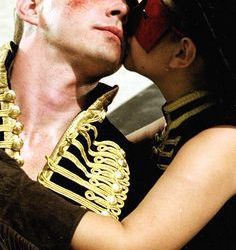
Later on, when the story takes a turn that is too dark for her, Alexandria alters it in the most dramatic way, by inserting herself into it. At first, she makes a heroic effort—even so far as dressing herself in her imagination in the same costume as her hero—and it seems as though she might succeed. But even this stubborn little Ganesha is powerless when Roy succumbs to the three real morphine tablets he has swallowed (along with the placebos.) She can’t waken him and she must walk away.
This is where the epic shifts from the idea of shared storytelling to a battleground where the two of them fight for control of the ending. After her second fall, when Alexandria pushes Roy to finish the epic, he turns it into a weapon, using it to strike out at her and make her understand why he feels he needs to die, to kill the hero image of him he has unwittingly helped build in her mind. Her influence has become so strong, he is aware that she can alter not only the story he has been spinning for her but his own choices. He tries to silence her. In the epic, she is gagged and in the hospital, he speaks over the things she tries to tell him. But she has also become aware of the true nature of the epic and what is really at stake and she will not give up. Note here that the tables have been turned and it is Alexandria in the bed and Roy in a chair by her side, the storyteller roles reversed.

And that is what this film is telling you. We connect with each other through story and story can be more powerful than we can guess. There is a great responsibility we take on when we invite people into our stories, regardless of our agenda. Roy did not begin his epic believing or even hoping that Alexandria would save him by changing the course of his own story. But that was the unpredictable risk he took by letting her in.
Is it a perfect film? Of course not. There is no such thing as any perfect work of art. But you don’t look at the Mona Lisa and say “The perspective of the background on the left does not match the perspective of the background on the right. This thing is crap!” No. Why? Because you are transported by the creative power of the rest of it. And maybe you are even a little touched by its flaws. Perfection is achieved by machines. Flaws are human. Humanity is who we are, and that is beautiful.
So some of the writing is clunky, some of the supporting performances awkward, and something is a bit off in the climactic sequence. The most troubling problem is that of Roy’s motivation. The reason for his great despair is not established well enough to support the ultimate resolution. But I believe these flaws are born out of the creative passion of the storyteller, and I will take flawed, risk-taking passion over carefully calculated flatness or a string of polished CGI tropes any day. Beyond the justly celebrated dazzling imagery of this film, what it gets right is loving, generous, and human. It is a rare and unusual combination of flamboyance and bombast alongside tender intimacy. It is a love note in astoundingly beautiful gibberish that will reward you over and over if you take the time to learn its language.

346 notes
·
View notes
Text
Thoughts : The Cell (2000)
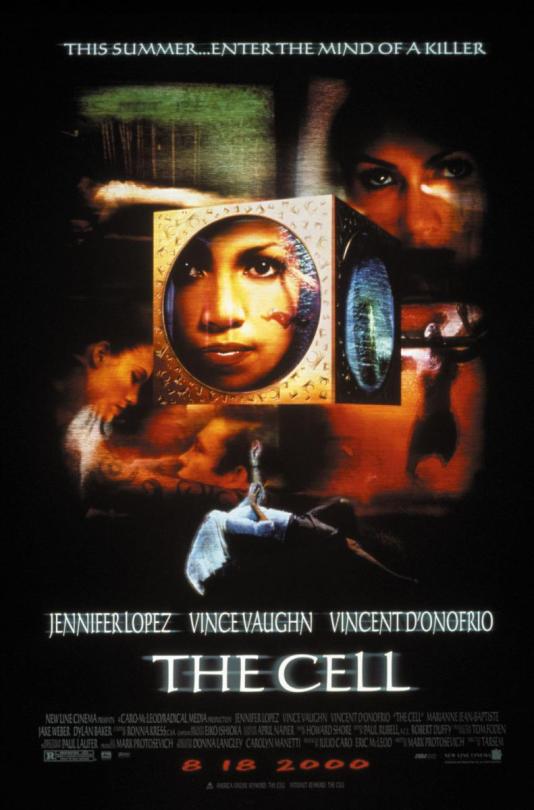
Back in the early days of this blog, I briefly mentioned The Cell in passing while sharing my thoughts on Fantastic Planet. This brief mention, however, does not do my feelings towards this film justice... from my initial viewing in theaters up through my recent re-watch in preparation for this blog entry, my enjoyment, devotion and fascination to this film continues to grow.
Dr. Catherine Deane (Jennifer Lopez) is a child psychologist who practices a controversial and forward thinking form of therapy where she neurologically links with her comatose patients in hopes of helping them regain consciousness. Deane’s latest patient, a young boy named Edward (Colton James) who is suffering from a rare form of viral infection-based schizophrenia, presents a challenge to her and her team, fellow doctors Henry West (Dylan Baker) and Miriam Kent (Mariannne Jean-Baptiste). The pressure is multiplied by Edward’s parents, who are funding the project, due to their demands for results and threats of pulling Edward from the project. Meanwhile, a serial killer named Carl Rudolph Stargher (Vince D’Onofrio) is leading Special Agent Peter Novak (Vince Vaughn) and his team on a frustratingly wild goose chase, having just disposed of his sixth victim and kidnapped Julia Hickson (Tara Subkoff), his potential seventh, in rapid succession. Novak and his team catch a break by recovering paint samples and dog hairs from the scene of the sixth victim’s disposal, but by the time they reach Stargher, he has fallen victim to the very same schizophrenic-based coma that Edward suffers from. In an act of desperation, Stargher is taken to Dr. Deane’s laboratory with the hopes that her neurological linking treatment can uncover the location of Hickson before she becomes the latest victim, but the process quickly turns into a psycho-surreal nightmare for Deane, Novak and all parties involved.
As someone who is not only fascinated with the complexity of the human mind, but fascinated with true crime as well, a film like The Cell is a perfect intersection of these two elements. The depravity of Stargher’s twisted methods are still shocking 20 years later, and immediately put the viewer in the shoes of our multiple protagonists by giving us a fly on the wall perspective to his sick madness. Focusing in on the psychological and physiological quandaries of being unable to differentiate imagination from reality, as well as the theoretical dangers of inviting the unknown into your mind, are grounds for high drama and tension. Tarsem Singh’s ability to include symbolism that alludes to both the human psyche and other films also play well, not to mention the warped representations of key clues that mirror reality.
For anyone who appreciates production design, this film is a playground of powerful visual elements. From the ‘fileted body’ suits used to house those taking place in the process, to the transition from reality into the mind, even down to Stargher’s home and dungeon, there is rarely a dull visual environment presented to the viewer. I do think that the case could have been solved prior to Novak diving into Stargher’s psyche, as it seemed that seeing the company logo in Stargher’s head suddenly reminded him that you could track down purchase histories, but honestly that’s just me splitting hairs... and it would’ve robbed us of some classic Vince Vaughn being Vince Vaughn moments while he is on Stargher’s operating table. In all honesty, you could mute this film and be blown away by the set design, costuming and emotion that radiates off of the faces of the actors. The visual representation of Stargher’s victims that Dr. Deane encounters on her first trip into his mind will forever haunt me.
Jennifer Lopez did a good job of balancing her character between mother/protector and professional therapist, and really allowed her thought process to resonate through her facial expressions. Vincent D’Onofrio’s performance is minimal in terms of dialogue, but he puts on a true masterclass in terms of movement and blocking, especially as the idealized Godlike version of himself that inhabits the dream world. Vince Vaughn allows himself room for a grounded and nuanced performance, specifically by using the comedic edge he normally exudes as inner turmoil and frustration that guides his devoted passion to catch Stargher. Dylan Baker and Marianne Jean-Baptiste not only play well off of one another in their role as a medical team, but allow their concerns and fears to stand in as surrogate for that of the audience. Vaughn is surrounded by star character actors that completely engulf themselves in their special agent roles, especially Jake Weber and Dean Norris, while James Gammon plays the grizzled veteran without falling into trope territory. Jake Thomas is surprisingly confident for such a young actor placed in such fantastic realms, and it’s the way that he owns his space but shows his fear that endears him with the viewing audience. Tara Subkoff also does a lot with a little, with her role as the captive easily setting her up for a one-note performance, but her acting choices bucking against that and making the audience buy into her danger. Appearances by Catheriene Sutherland, Colton James, Musetta Vander, Patrick Bauchau, Pruitt Taylor Vince, Lauri Johnson, Kim Chizevsky-Nicholls and Gareth Williams round out the cast.
For those unfamiliar with this film, or for fans of films like Inception, The Cell is a mind-bending punch in the gut in all the most enjoyable ways. The ideas that are presented and executed provide discussion topics that last long after the film has ended, and the visuals burn themselves into the memory quite easily.
#ChiefDoomsday#DOOMonFILM#TheCell#TarsemSingh#MarkProtosevich#JenniferLopez#VincentDOnofrio#JakeThomas#VinceVaughn#JakeWeber#DylanBaker#MarianneJeanBaptiste#TaraSubkoff#CatherineSutherland#ColtonJames#MusettaVander#PatrickBauchau#JamesGammon#DeanNorris#LauriJohnson#PruittTaylorVince#KimChizevskyNicholls#GarethWilliams
0 notes
Photo

Theseus, jovem plebeu que vê a mãe ser morta pelo exército de Hyperion e, aprisionado, recebe a ajuda de uma vidente, não sabe ainda que seus ideais servirão de norte aos seus seguidores, e que o ajudarão na luta contra à barbárie do vilão. . #henrycavill #theseus #immortals #lukeevans #mickeyrourke #freidapinto #tarsemsingh #hcbrazilianfans
1 note
·
View note
Photo
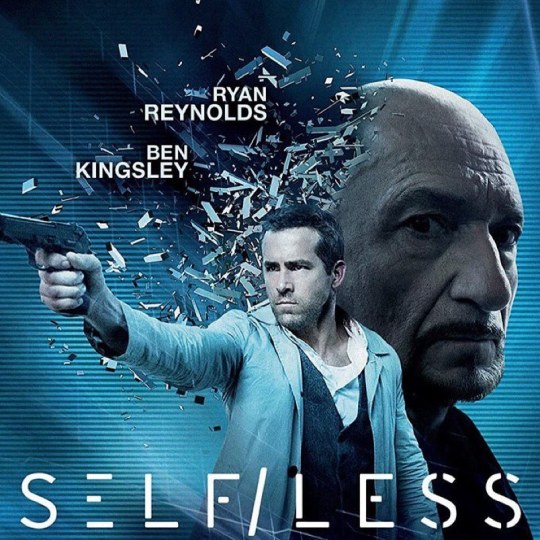
Self/less (2015) Directed by #TarsemSingh Starring #RyanReynolds #NatalieMartinez #MatthewGoode #VictorGarber #DerekLuke #BenKingsley #Selfless #Hollywood #hollywood #picture #film #movie #cinema #films #theater #movies #movieposter #movieworld #movielovers #movienews #screen https://www.instagram.com/p/CAcwBpdAgjZ/?igshid=1d6rraeey39wt
#tarsemsingh#ryanreynolds#nataliemartinez#matthewgoode#victorgarber#derekluke#benkingsley#selfless#hollywood#picture#film#movie#cinema#films#theater#movies#movieposter#movieworld#movielovers#movienews#screen
0 notes
Photo

Golden Globe nominee Jennifer Lopez in The Cell (2000). She’s up for Best Supporting Actress in Hustlers and I’ll be rooting for her! #jenniferlopez #bestsupportingactress #goldenglobes #goldenglobes2020 #hustlersmovie #thecell #tarsemsingh #jlo (at The Beverly Hilton) https://www.instagram.com/p/B67QgRLFI5F/?igshid=1vp8vuxc8knwj
#jenniferlopez#bestsupportingactress#goldenglobes#goldenglobes2020#hustlersmovie#thecell#tarsemsingh#jlo
0 notes
Photo
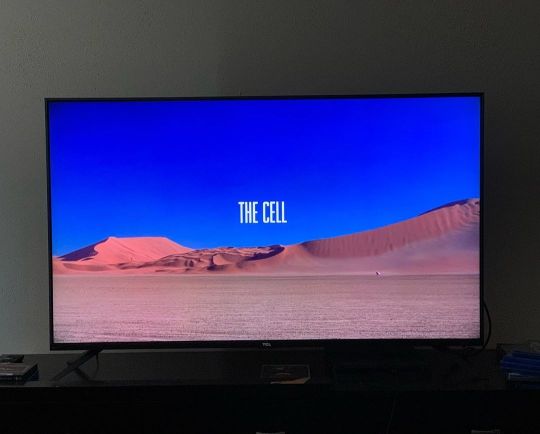
Horror Movie Marathon (2019) October 28th 68. The Cell (2000) Directed by Tarsem #thecell #tarsemsingh #jenniferlopez #vincevaughn #vincentdonofrio #dylanbaker #mariannejeanbaptiste #jakeweber #deannorris #netflix #howardshore #markprotosevich (at Oswego, New York) https://www.instagram.com/p/B4Su24CgBpA/?igshid=8wx0cztroytx
#thecell#tarsemsingh#jenniferlopez#vincevaughn#vincentdonofrio#dylanbaker#mariannejeanbaptiste#jakeweber#deannorris#netflix#howardshore#markprotosevich
0 notes
Photo

So much of THE CELL (2000) is excellently inspired by art, from paintings to music videos. Swipe through to see the rest of the scenes Tarsem Singh modelled off famous pieces of art. 1) This moment is based off Odd Nerdrum's 1989 oil painting Dawn (David Bowie bought it for $1.5-million in 1990) 2) A creepy scene visually inspired by the "Losing My Religion" video from REM, directed by Singh himself in 1991. 3) These stairways J-Lo runs around are a visual reference to one of the "Schacht" paintings by legendary artist H.R. Giger. 4) When J-Lo's character sees the horse dissected in front of her it's inspired by the works of Damien Hirst, who's done a series of artworks using dead animals, either dissected or preserved in formaldehyde (see: The Physical Impossibility of Death in the Mind of Someone Living). #Horror #Art #InstaHorror #TarsemSingh #DamienHirst #HorrorMovies #HorrorFan #HRGiger #OddNerdrum #REM #LosingMyReligion #VincentDOnofrio #HorrorAddict #HorrorMovies #Film #Surrealism #Movies (at St. John's, Newfoundland and Labrador) https://www.instagram.com/p/BzqeFivlz5G/?igshid=12b5ofxyw7eyd
#horror#art#instahorror#tarsemsingh#damienhirst#horrormovies#horrorfan#hrgiger#oddnerdrum#rem#losingmyreligion#vincentdonofrio#horroraddict#film#surrealism#movies
0 notes
Photo

mother’s day!! #thefall #tarsemsingh #terrorfactory #quietalertness https://www.instagram.com/p/BxW7B6fDt_F/?utm_source=ig_tumblr_share&igshid=1bitm490r9p1
1 note
·
View note
Photo

@leeepfrog Hi #LeePace, Massive fan, #HACF Massive. The wife and I watched you and Catinca in #TarsemSingh‘s #TheFall over 50 times We fell in love with both of you in that #film We swore if we ever had a child, we would name her after Catinca’s character. this is Alexandria. https://www.instagram.com/p/BtXRGZDHqKq/?utm_source=ig_tumblr_share&igshid=1p84dity7hquo
0 notes
